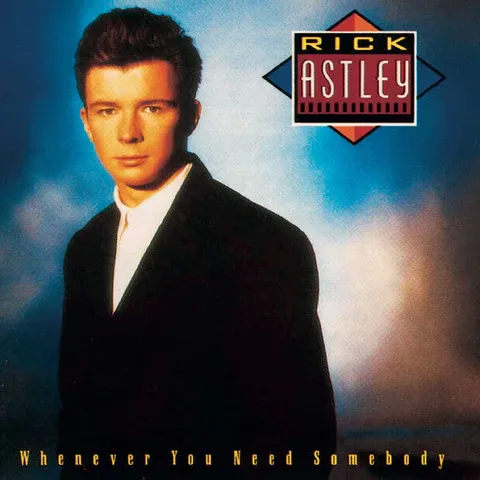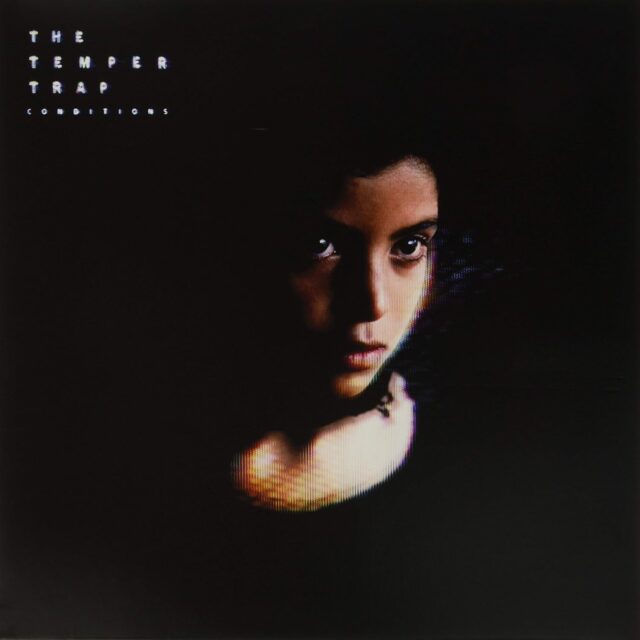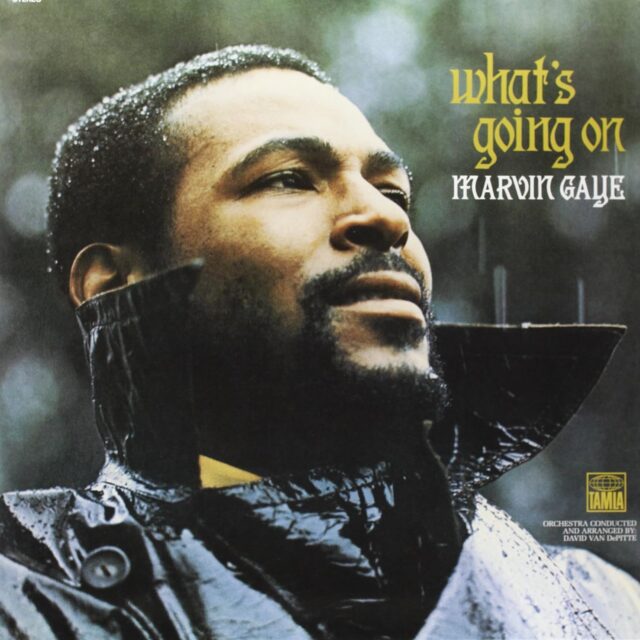We’re all Rick Astley. Unknowingly, Rick Astley became part of us.
With ‘Never Gonna Give You Up’ by Rick Astley, you have a song with heartfelt meaning and, by the way the world works, a meme that continues to Rickroll people right now.
This iconic track has transcended generations, becoming an unexpected hit from an unlikely source. Released on July 27, 1987, as the lead single from Astley’s debut album Whenever You Need Somebody, ‘Never Gonna Give You Up’ carries more depth than first meets the ear—or the eye.
Astley grew up in Newton-le-Willows, a small town in Merseyside, England, located between Liverpool and Manchester. He was 19 years old when he recorded ‘Never Gonna Give You Up.’ At the time, he was relatively unknown but had already been discovered by Stock Aitken Waterman (SAW), the renowned British production trio famous for creating catchy, commercially successful pop songs.
SAW worked with artists such as Dead or Alive with ‘You Spin Me Round (Like a Record)’ (1984), Bananarama with ‘Venus’ (1986), and Kylie Minogue with ‘I Should Be So Lucky’ (1986).
The inspiration behind Never Gonna Give You Up came from a desire to create a feel-good song with an upbeat message about love, loyalty, and commitment.
In a 2022 interview, Astley said his start came when his band at the time “entered this battle of the bands. One of the judges that night was a guy called Pete Waterman, part of this production team, Stock Aitken Waterman. Pete Waterman was kind of the business end of it, and he was the ideas person. He’s a larger-than-life character.”
“Pete Waterman got in touch a couple of times over the next few months. So I went down to see him because he was really interested in signing just me. I didn’t feel great about it. I was going there without the band. They were my mates, and it felt alien to just go, ‘So I’m just gonna be me on my own—that’s it?'” said Astley. “In the end, I just sort of thought, ‘Oh, sod this. I’m just gonna give it a try. I’ll get in a real studio, we’ll make a single. It’ll probably die a death, but what an experience. I’m 19. Whatever, let’s just do it.’ So I signed a little deal.”
When Astley arrived at the SAW studio in London, he thought he would immediately be making a record, but ended up doing all the odd jobs for about a year, such as making the tea and coffee, sandwiches, and biscuits. “First I was like, ‘Really? Is that what I’ve signed to do?'” said Astley.
Waterman stated that he knew Astley had talent but needed to refine his skills: “I felt he needed some depth in the music industry, so I thought if he’d learn the recording techniques, it would be good for him.”
“At this juncture, Mike and I had not heard Rick sing, so we didn’t really know what we were dealing with,” said Matt Aitken.
Mike Stock said, “Finally, when I got him on the microphone, I’m listening, I couldn’t believe the voice.”
“His appearance didn’t match the sound, you know. It was an oddity,” stated Aitken.
“So I said to Matt Aitken and Pete Waterman, ‘I think Rick’s too good to do a cover. We should write something for him.’ And we set to work,” Stock said.
The trio worked with Astley for months. One day, while driving to the studio, Waterman had a heated discussion with his girlfriend and threw down the car phone. Astley then said to him, “You’re never gonna give her up!”
“I went, ‘Wow, that’s an idea for a song,'” said Waterman. “We came to work. I distinctly remember running through the studio door… Finding our keyboard player in the building, I said, ‘Get this tune down quick for me.’ And I sang him this really simple tune—Da-la, la-la-la, da-la-la-la-la. And I had the title ‘Never Gonna Give You Up.’ I certainly didn’t have, ‘Never Gonna Let You Down.'”
SAW quickly worked on the lyrics while Astley went to the microphone and started singing.
“We finished the recording and we left it on the shelf. We weren’t sure what we had. How stupid can you get? You could see when you get it wrong, but we weren’t very smart sometimes when we had it perfectly right,” said Stock.
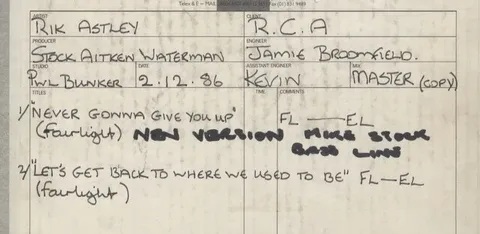
Astley said that the reason for the shelving of Never Gonna Give You Up was because, “I think they were unconvinced of my voice and the way I looked and me being able to front it. And to be honest, I think they were kind of right.”
“It was like your brother or your son was here. We all supported him, but I don’t think anybody here thought it was going to be number one… So we had this tape with Rick singing ‘Never Gonna Give You Up.’ Rick got frustrated with us, you know, not issuing it. So I sent the tape to the Mix Mag,” said Waterman.
“They did a sample on their monthly tape. Driving down the motorway and listening to Capital, and then suddenly, Rick came on. So I rang up Capital and said, ‘You know, where have you got this record from?’ And they’d edited it together for the Mix Mag tape,” continued Waterman. “It’s getting so much play, we can’t really change it. Radio stations, it suddenly went from nowhere to number one in about a week because people just rang in and said, ‘What is this record? Play it and play it.'”
The frustration that Astley felt over the unreleased track, followed by the moment the single was sent to the media, and Never Gonna Give You Up being edited and amplified, created a sequence of events where the song lived into its own promise and became a massive hit.
Astley said, “It just went so fast. It was unreal. We only made the video in the week it went to number one. I don’t think I’d ever been in front of an actual camera. Nobody said to me, ‘This is what it’s going to be like.’ ‘Now we need a video. Just get him there and make a video.’ And they were so unprepared to make the video, all the clothes in that video were mine. The stripy T-shirt and the blazer, the double denim, the turtleneck. People think that that raincoat is something somebody dreamed up. It was mine, for God’s sake. Boom. It’s all mine.”
Astley was 21 years-old when Never Gonna Give You Up was released, stating on an interview, “I can kind of understand that people would think I looked completely different than what I sounded like—a red-haired kid with freckles. I mean, let’s face it, I looked about 11 years old. People just looked at me and went, ‘What? That guy is singing it?’ But I think that’s part of the charm of it. I mean, charming is a very nice way to put it.”
The reaction to the song and video was immediate, Waterman said “that video became iconic. I mean, wherever you went in the world, in the eighties, everybody did that dance and everybody talks about the video.”
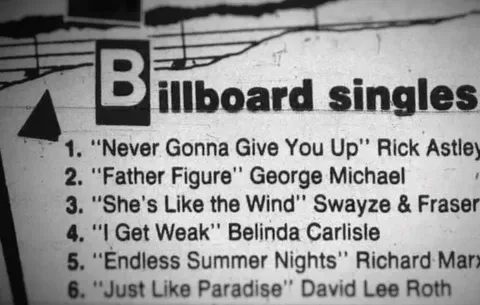
Never Gonna Give You Up quickly reached #1 on the UK singles chart in August 1987, where it stayed for five weeks. It also topped the US Billboard Hot 100 on March 12, 1988.
Regarding the Rickroll phenomenon, Sean Cotter is credited with starting the first Rickroll on the message board 4chan in May 2007. His motivation was fairly simple—he chose Rick Astley’s song because it was released the year he was born, and thought it would be a funny bait-and-switch prank to play on other users expecting a video game trailer. From there, it quickly spread as an internet meme.
“I’ve been absolutely fine with it. We have a daughter, and she’s 26 years old now. When that kind of started about 10 years ago, she literally sat me down on the couch and said, ‘You do realize it’s got nothing to do with you?’ I thought, ‘Yeah, she’s absolutely right. It doesn’t. It’s just a song somebody chose to do this prank with.’ So, I kind of think, I don’t own it anymore. It’s nothing to do with me—this is something else,” said Astley.
Lyrically: Never Gonna Give You Up
We’re no strangers to love
You know the rules and so do I
A full commitment’s what I’m thinkin’ of
You wouldn’t get this from any other guy
I just wanna tell you how I’m feeling
Gotta make you understand
These opening lyrics from ‘Never Gonna Give You Up’ are a declaration of love. The line acknowledges a shared understanding of the game of love that’s at play. “We’re no strangers to love / You know the rules and so do I.”
The promise of ‘a full commitment’ and the claim that elevates his qualities above others suggests something no other guy in the entire world can offer: a genuine commitment. The statement about telling how he’s feeling shows the self-confidence it takes to communicate the depth of his love.
Never gonna give you up
Never gonna let you down
Never gonna run around and desert you
Never gonna make you cry
Never gonna say goodbye
Never gonna tell a lie and hurt you
The chorus of Never Gonna Give You Up is a promise of loyalty, love, and trust.
“Never gonna give you up” and “Never gonna let you down” reveals his dedication to standing by his partner, no matter what is happening. The lines “Never gonna run around and desert you,” “Never gonna make you cry,” followed by “Never gonna say goodbye,” and “Never gonna tell a lie and hurt you,” is his commitment to avoid actions that would cause any pain.
We’ve known each other for so long
Your heart’s been aching, but you’re too shy to say it
Inside, we both know what’s been going on
We know the game and we’re gonna play it
The verse plays with the idea of taking a risk to break down emotional barriers and elevate the relationship to a new level. There is a tension between their long-standing connection and awareness of lingering feelings, but the other person is “too shy to say it.”
And if you ask me how I’m feeling
Don’t tell me you’re too blind to see
These lyrics bring a sense of frustration, urging the other person to stop pretending not to notice their shared feelings.
The remainder of the song features repetitive chorus lyrics that aim to solidify the certainty of the promises being offered.
Stock Aitken Waterman’s vision of producing a catchy song with an upbeat message about love, loyalty, and commitment was achieved and continues to do so today.
Never Gonna Give You Up is enduring.
